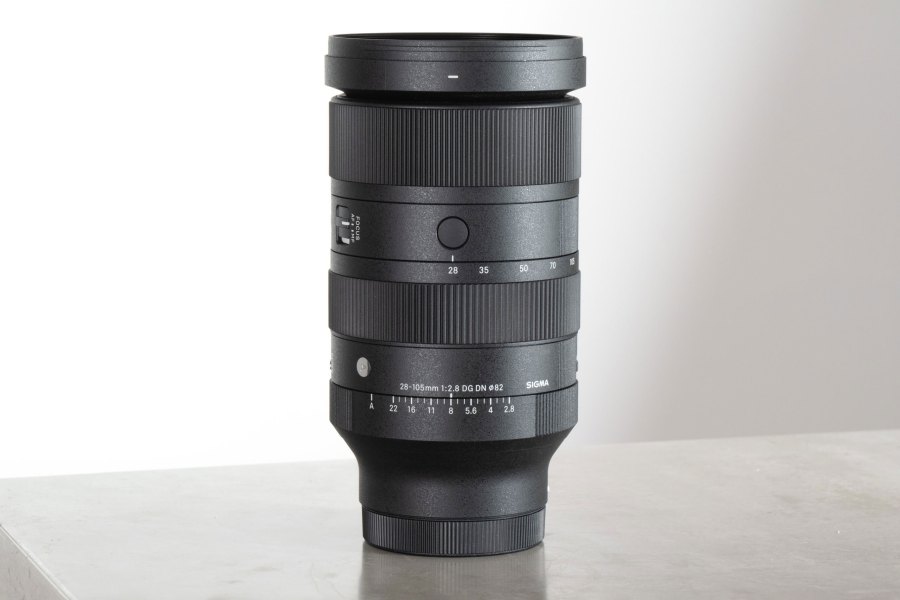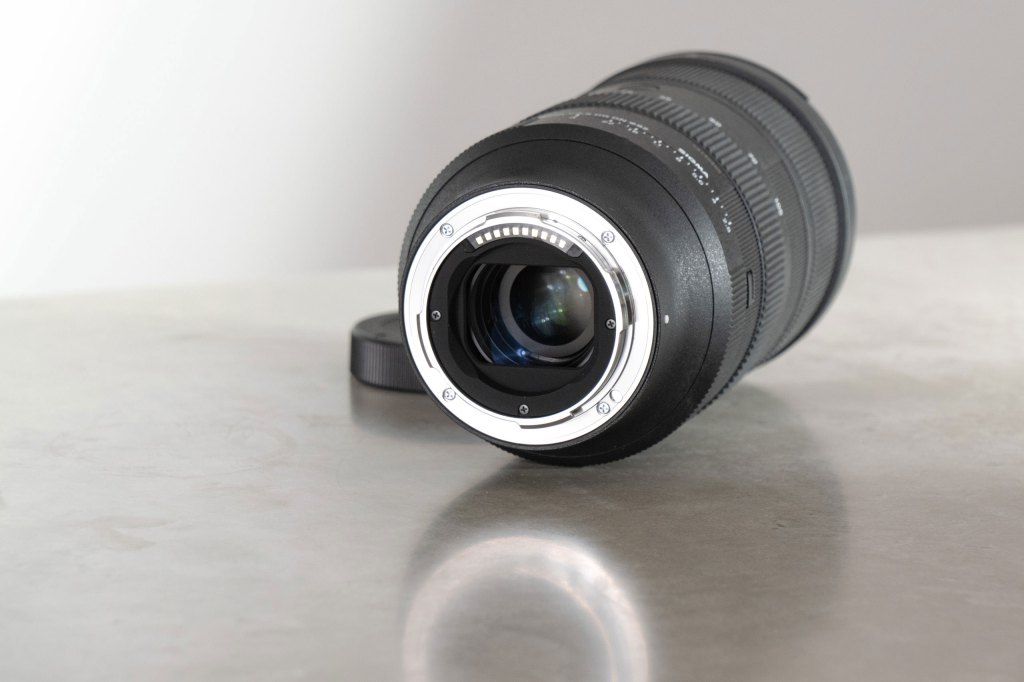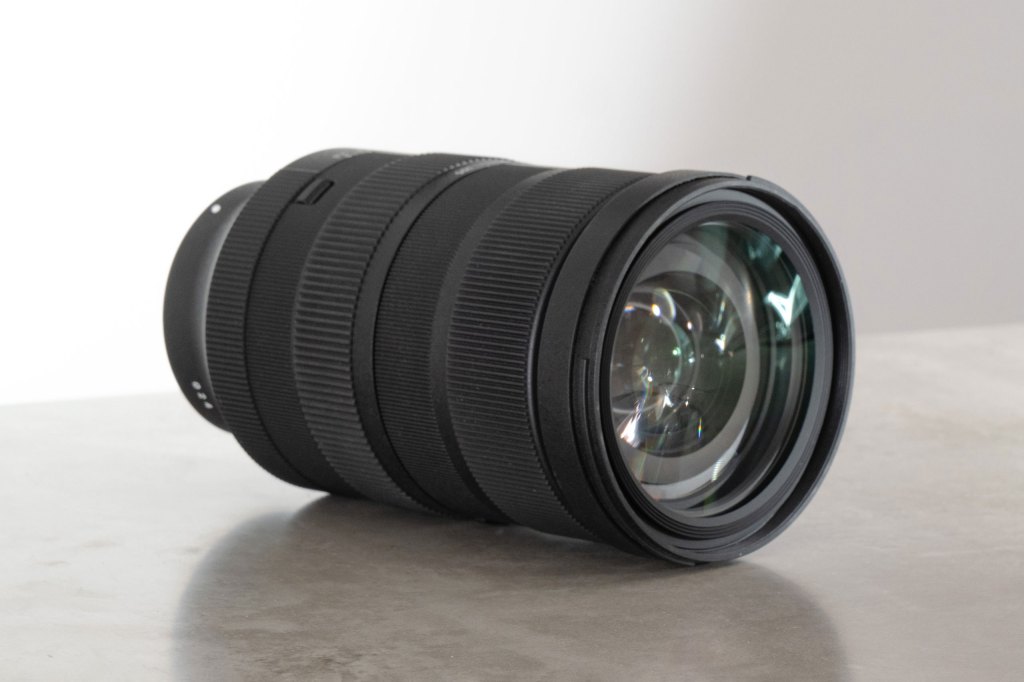Amateur Photographer verdict
The Sigma 28-105mm F2.8 DG DN Art stands out for its combination of a large maximum aperture and 105mm telephoto. It’s quite large, but handles well and delivers very good image quality.- Very useful focal range offering angles for landscapes to portraits
- Excellent distortion control
- Large aperture allows shallow depth-of-field and low-light shooting
- Great build and design
- Very good value
- A bit heavy
- Slightly larger than a normal standard zoom
- Zoom ring is a bit stiff
Sigma’s seemly constant striving to be different and better has gifted us a standard zoom lens with a 105mm telephoto end combined with a constant maximum aperture of f/2.8 – the Sigma 28-105mm F2.8 DG DN Art. While most of the competition offer 24-105mm lenses that open only to f/4, this independent brand gives us a stop of extra light at every focal length, but doesn’t charge us any more for the benefit. This makes it one of the most unusual and best lenses for Sony E-mount and L-mount cameras.
Sigma 28-105mm F2.8 DG DN Art at a glance:
- $1499 / £1399
- Large-aperture standard zoom
- For full-frame mirrorless cameras
- Minimum focus distance 40cm
- 82mm filter thread
- 87.8mm diameter x 157.9mm length, 995g
- Sony E and L-mount versions available
Sharp-minded readers may remember that at the end of my Sigma 24-70mm F2.8 DG DN Art review, I greedily asked Sigma’s engineers for a little more reach in the form of a 24-105mm f/2.8. Sigma UK pretended that the engineers had listened and hastily put this lens together just for me, but could only manage 28mm at the wide end in such a short time.
I would be flattered indeed, but also deluded to think such a lens could be designed in just a few weeks on the whim of some idiot reviewer. I’m just as glad to see it, nonetheless.
The usual 24-70mm focal range of standard zooms really does cover a useful set of angles. But having 85mm, 90mm and 105mm in the mix really opens a lens like this to a new set of purposes, of which portraiture is not the least. However, size becomes an issue when extending the range of a standard zoom with a fast maximum aperture.
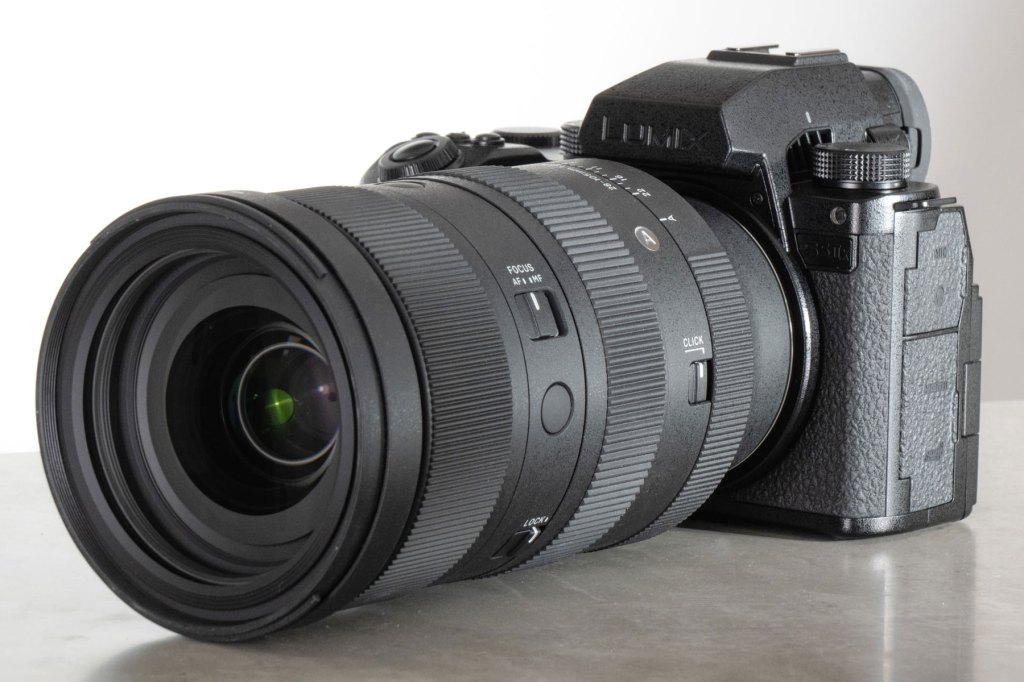
Sigma tells me the foreshortening at the wide end to 28mm from the regular 24mm has been done to ensure the size and weight of the lens doesn’t exceed what users would consider reasonable for an everyday, on-all-the-time kind of lens.
I’m happy enough to take the loss of a few millimetres at the wide end, but I’m more interested to see whether Sigma has managed to maintain the high optical standards we’ve come to expect from a modern Art-series lens. That 3.75x zoom range is still significant, and it takes in some awkward focal lengths.
Sigma 28-105mm F2.8 DG DN Art: Features
If you have followed the development of recent Sigma Art lenses, you may have a decent idea of what to expect in this model, as it abides by all the rules that have driven Sigma’s brand value in an upward direction. Designed for full-frame cameras with L or Sony E mounts, the optical construction of this zoom takes in 18 elements in 13 groups and includes 2 elements in the company’s fluorite-like FLD glass, and one in SLD glass – both of which are low-dispersion type designs.

We also get a total of five aspherical lenses which are used to reduce the length of the optical path, so the lens barrel can be kept relatively short. Sigma is very proud that one of those aspherical lenses, which sits in the forward lens group, has a diameter of 66.4mm. Aspherical elements this large are very hard to make, we are told, and are possible only through the company’s advanced manufacturing facility in Japan.
Another interesting feature, with potential to have a direct impact on the look of our images, is the 12-bladed iris. With the extra telephoto focal lengths, this rounded aperture could help to maintain attractive out-of-focus highlights even as the aperture is closed down, which will be useful in portraiture.
Minimum focal distances remain constant at 40cm across the whole zoom range, which gives us a maximum magnification ratio of 1:3.1 when we set the lens to 105mm. It’s hardly true macro but impressive all the same – we can fill the frame with subjects as small as 10cm across.
Sigma gives us the usual anti-flare coatings that have proved very effective in the past, and the front element is additionally coated to repel water and oil. We also get a manual aperture ring with an option to de-click the stops, a zoom lock, and a pair of function buttons on the barrel that are set by default to AF Lock. The filter thread is 82mm – so in line with other recent Art zooms.
Sigma 28-105mm F2.8 DG DN Art: Build and handling
As the Art series is Sigma’s premium lens offering you might expect this 28-105mm F2.8 DG DN Art lens to be very well made – and it is. The construction feels solid, secure and as though it will cope with extensive use – and even a good deal of rough treatment.
Despite Sigma being very proud of the fact the lens weighs less than 1kg (and that being a favourable weight compared to some others) this is still a significant addition to a camera bag. At 995g (for the L-mount version – the Sony E model is 990g) it weighs a lot, and it is pretty big too. The barrel measures 87.7mm in diameter, and when at rest in the 28mm position, the lens protrudes 157.9mm from the camera’s mount.
Shifting the zoom ring to the 105mm position though makes the front element whizz out another 4cm to make the lens just slightly over 200mm. It isn’t the extended length, though, that’s the issue when you are deciding where to house the lens in your camera bag.
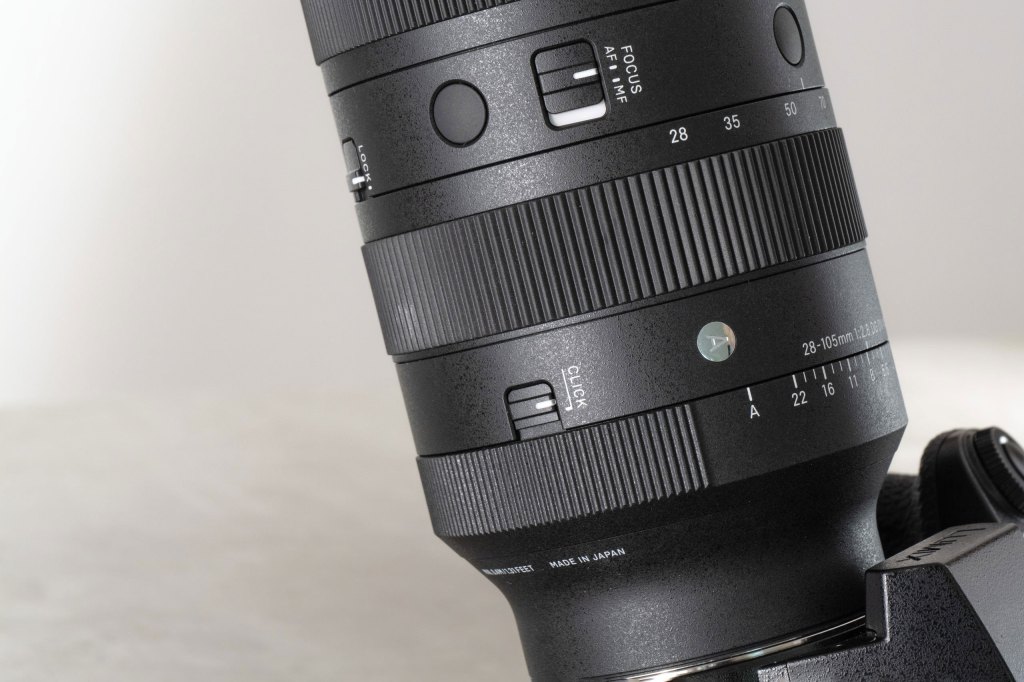
In use I found neither the length nor the weight of the lens to be an issue, and I happily carried it for full days without either aspect bothering me. I was aware of having a sizable set-up, but not so that I wished I’d left it at home.
This lens is actually very comfortable to hold and felt nicely balanced on the Panasonic Lumix S5ll and Lumix S9 cameras I used it on for this review. As is usual with these Art lenses, the zoom and focus rings are nicely placed, and we can tell in a split second whether our fingers are on the zoom, focus or aperture ring, as each feels different enough to be quickly distinguished.

The zoom action is noticeably stiffer than on the Sigma 24-70mm F2.8 DG DN Art lens, but not uncomfortably so – it just takes a little more determination to rotate the ring through the almost 90° angle required to get from 28mm to 105mm. That stiffness does make micro-adjustments somewhat more difficult to make, though. The buttons and switches are all well placed on the barrel and are easy to reach when needed.
Sigma 28-105mm F2.8 DG DN Art: Autofocus
The lens’s autofocus is driven by Sigma’s recently developed HLA (High-response Linear Actuator) motor that seems to shift the focusing group with ease, great speed and very little sound. Using the lens on the Lumix S9 and S5ll, I didn’t once feel the mechanical properties of the lens inhibited the speed of the camera’s own AF. With that bright aperture too, the camera was always fed with plenty of information to work with, even in low light situations.
Sigma 28-105mm F2.8 DG DN Art: Image quality
I don’t know if I have a healthy suspicion of zooms or just a plain suspicion of zooms. But either way, my suspicion manifests in direct proportion to the range of the zoom and how far the focal lengths extend either side of ‘normal’ – 50mm in this case. I expected good image quality from this lens, but didn’t expect it to be up to the standards we see in the 24-70mm f/2.8 or the 70-200mm f/2.8, as the range and desire for miniaturisation make things a little more demanding.

In the event, though, image quality is really very good indeed. While it’s perhaps not quite as sparkling as we get from the 24-70mm when used wide open, it is still excellent.
Sharpness is very good but we don’t quite get the same clarity the 24-70mm possesses, so images don’t at first seem quite as detailed when we look (too) closely. Detail is there all along, but we just need to tickle it out with the ‘Texture’ slider to enhance the micro-contrast. When closed to f/4, the resolution of the lens is really exceptional, and it remains so right down to f/11 – dropping only slightly at f/16 and f/22.

One of the features I really appreciate is the quality of the out-of-focus highlights. When the lens is used wide open at 105mm, portrait backgrounds take on a beautiful painterly atmosphere with a smooth softness that is very pleasing.
Even when we close the aperture down beyond the brave f/2.8 and f/3.5 shallow depth-of-field settings, background details remain firmly in the background and don’t take on hard edges that project them to our attention.

Even at f/8 or thereabouts, close headshots still have lovely backdrops, but with intensely detailed focused areas. This means the longer focal lengths don’t present us with some sort of compromise we might hesitate to suffer over a fixed lens – the look is lovely.
I’m also impressed with the way curvilinear distortion is controlled at the wide end of the zoom. I used the lens to compare to my usual lens when shooting a kitchen and was impressed that no extra distortion correction was needed, and that edges close to the extremes of the frame appeared straight. I wasn’t expecting that, and had shot on my usual lens as well in case of disaster.

Chromatic aberrations do not show their face, and vignetting sits right at the back of the class where it won’t be noticed.
Sigma 28-105mm F2.8 DG DN Art: Our Verdict
As I expected, during the weeks I shot with this Sigma 28-105mm F2.8 DG DN Art lens, I was very glad of the extra 35mm at the long end. And while I would have liked 24mm at the other end, I found I only really missed it on one occasion.

It is a bit big, and it is a bit heavy, but both of those issues are readily forgotten when you discover you are able to shoot at 105mm and f/2.8 one moment, and then at 28mm and f/8 the next. It’s a very versatile lens. And should any negative feelings remain when you get home, they will be further dispelled when you bring your images up on screen.
I have been delighted with what this lens produces and, after initial testing, used it for professional architectural interiors, portraits and for recording the fast-moving children at a summer camp – and it has performed exceptionally well in all cases. Now I just need to decide what I should wish for next from Sigma’s excellent Art range.

Follow AP on Facebook, Twitter, Instagram, and YouTube.
Sigma 28-105mm F2.8 DG DN Art: Full Specifications
| Price | $1499 / £1399 |
| Filter Diameter | 82mm |
| Lens Elements | 18 |
| Groups | 13 |
| Diaphragm blades | 12 |
| Aperture | f/2.8 – f/22 |
| Minimum focus | 40cm |
| Length | 157.9mm |
| Diameter | 87.8mm |
| Weight | 995g |
| Lens Mount | Sony E (full-frame), L-mount |
| Included accessories | Caps, hood |

